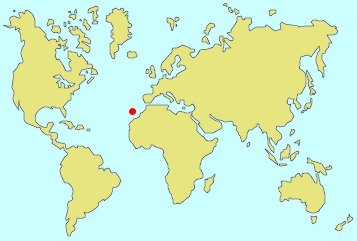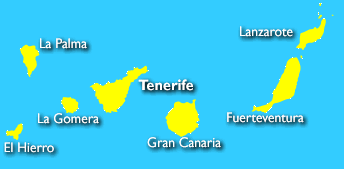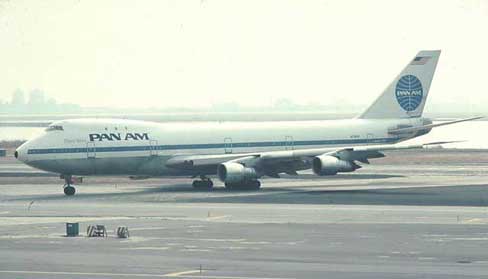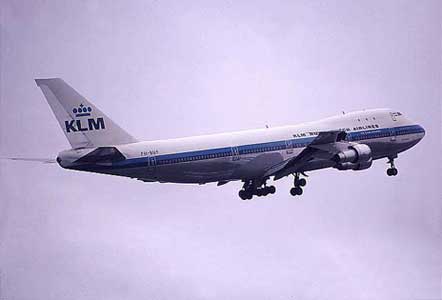The Tenerife crash - March 27th, 1977
Some 583 people died or were mortally injured on March 27th 1977 after two Boeing 747 jumbo jets collided on a runway at Los Rodeos airport, Tenerife, in the Canary Islands, making this the world's worst civil aviation disaster.

The PanAm Boeing 747-121, on a charter passenger flight from Los Angeles to Las Palmas, had been in the air for eight hours. Some 396 people, including 16 crew, were onboard. Its captain was annoyed as he had not obtained clearance to land at Las Palmas. A bomb had exploded there two hours previously and the airport was closed for repair. The 747 was requested to divert to Tenerife, 70 km west of Las Palmas. The Captain and his passengers were unhappy about this arrangement, but they had no other choice.
At 14h15 GMT, PanAm flight 1736 made its final approach on runway 30.

The PanAm 747 was requested to park in fourth position, behind the KLM 747. The KLM aircraft was also a charter flight (KLM 4805). It had landed 45 minutes previously, with 248 people onboard, including 14 crew. Its captain was nervous: very strict Dutch regulation forbid the crew to exceed their quota of flying hours. Should the plane not take-off soon, its captain and KLM could be in serious trouble.
At 14h30 GMT, good news: the Tenerife control tower informed all grounded aircraft that Las Palmas airport had just re-opened. The controller informed the Panam Captain that in order to speed up take-off he could taxi right behind the KLM 747. The Panam captain agreed.

Weather deteriorated: a heavy fog would soon cover the airport. The visibility rapidly dropped to a few hundred meters (300 feet). At 16h51, the KLM 747 was cleared to start its engines. At 16h52, the Panam 747 requested clearance to start its engines. The control tower's answer was as follows:
16:52 (Tenerife control tower) - PanAm 1736, you are cleared to start. Report ready for taxi. For your information, you will have to backtrack behind the other 747 and leave the runway third taxiway to your left.
Both 747s would therefore backtrack the length of the 3,400-meter (11,000 feet) runway at low speed. The KLM aircraft would backtrack to the end of the runway, make a u-turn and report ready for take-off. The PanAm plane would exit the runway into the third taxiway in order to free the way for the KLM aircraft to take off. This was deemed the simplest solution in view of heavy traffic at the airport.
At 16h55, the Dutch 747 reached the runway, the American 747 a few hundred meters behind it. The fog was becoming denser: the 747s could not see each other, and neither aircraft could be seen from the control tower. The visibility was less than 200 meters.

17 :01 :57 (PanAm first officer) – Tenerife the Clipper one seven three six.
17 :02 :01 (Tenerife control tower) – Clipper one seven three six Tenerife.
17 :02 :03 (PanAm first officer) – Ah. We were instructed to contact you and also to taxi down the runway, is that correct?
17 :02 :08 (Tenerife control tower) – Affirmative, taxi into the runway and -ah leave the runway third, third to your left.
17 :02 :16 (PanAm first officer) – Third to the left, OK.
Background conversation in the control tower made it difficult for the crew to hear the instructions.

